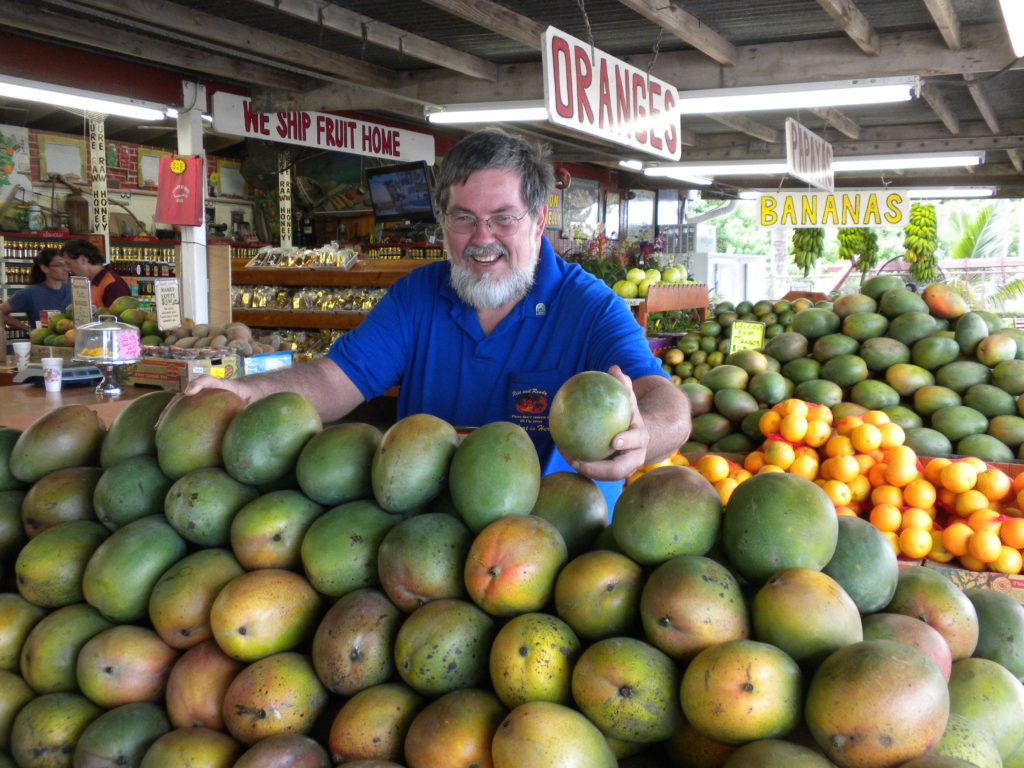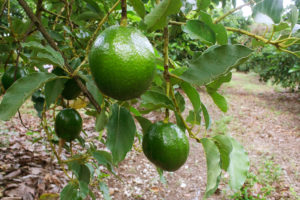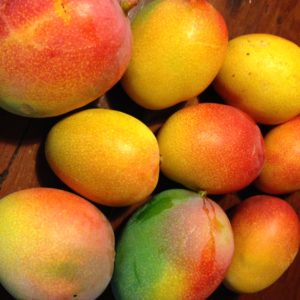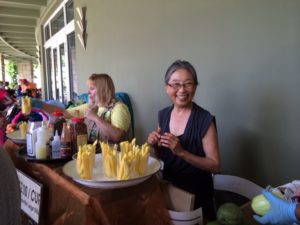 It’s hard to miss Robert Moehling, the six-foot tall, Santa-bearded, affable owner of the Robert Is Here fruit stand. Located in Homestead, FL, Moehling has manned this stand for 60 years come November 2, ever since age six when his father stationed him under a hurricane shutter hand-painted with the words “Robert Is Here” in hopes of folks seeing the tiny boy and buying the struggling family’s cucumber crop.
It’s hard to miss Robert Moehling, the six-foot tall, Santa-bearded, affable owner of the Robert Is Here fruit stand. Located in Homestead, FL, Moehling has manned this stand for 60 years come November 2, ever since age six when his father stationed him under a hurricane shutter hand-painted with the words “Robert Is Here” in hopes of folks seeing the tiny boy and buying the struggling family’s cucumber crop.
Eight years later, Moehling purchased his first piece of property. He left the beaten path of vegetable farming and ventured into tropical fruits. Today, Robert Is Here is often called the Disney World of tropical fruit stands. It’s no wonder. Depending on the time of year, visitors find everything from banana to black sapote, mango to mamey, guava to guanabana. Indeed, it’s only here in Florida that such an appetizing array of exotic tropicals are grown commercially to the delight of locals and visitors alike.
“There is almost always some form of tropical fruit in season from Merritt Island to Tampa Bay and South throughout the year,” says Chris Denmark, supervisor at the Florida Department of Agriculture and Consumer Services in Tallahassee. 
“Most of this production is close to the coasts in South Florida. Homestead, between Miami and Key Largo, is the main area of production. A short drive on Krome Avenue (State Road 997) in Homestead will deliver visitors to the heart of Florida’s tropical plant and fruit scene. Other production areas include Pine Island on the Gulf Coast in Charlotte Harbor near Fort Myers and Merritt Island on the Atlantic Coast near Cape Canaveral. Lychee and mango are the main crops grown in these two areas.”
Pine Island Tropical Fruit Market, fed by Gary and Donna Schneider’s 16-acre Pine Island Tropicals Farm in Bokeelia, sells selections such as carambola (starfruit), sugar apples and tamarind throughout the year. North in Loxahatchee near Palm Beach, Ravi Tella and his family grow a bountiful selection from usual pineapples and coconuts to unusual lychees and canistel at their 25-acre Naga Gardens. The farm is open by appointment for tours and fruit purchases.
 “There are few tropical fruits that you eat the skin or the seed, so it’s not difficult to figure out how to enjoy them. Also, most tropicals will ripen in room temperature, so putting them in the refrigerator is not a good idea,” says Jeff Wasielewski, a Homestead-based extension agent for the University of Florida’s Institute of Food and Agricultural Sciences.
“There are few tropical fruits that you eat the skin or the seed, so it’s not difficult to figure out how to enjoy them. Also, most tropicals will ripen in room temperature, so putting them in the refrigerator is not a good idea,” says Jeff Wasielewski, a Homestead-based extension agent for the University of Florida’s Institute of Food and Agricultural Sciences.
You can find three easy ways to indulge in tropical fruits: exhibits, events and eats. The Fruit & Spice Park in Homestead features hundreds of fruits, vegetables, herbs and spices at its 37-acre facility. Samples are available at the visitor’s center entrance and narrated tram tours take place three times daily.
Mangoes and more are on the menu at the South Beach Wine & Food Festival each February. Last year’s selections by celebrity chefs included green mango and cucumber salad, Thai papaya ceviche, and pomegranate passion fruit tuna ceviche. 
Florida may be best known for its citrus, but its tropical fruits are definitely a hit not to miss!





